Japan’s golden-age collector cars just keep climbing
Hagerty is all about tracking the ebbs and flows of collector car values. After updating our data last month, even we couldn’t believe some of the upward swings as the collector market continues to buzz. Growth was widespread, with some segments that had historically been down springing back to life and some segments that were already hot getting even hotter.
Put Japanese cars in the “hotter” category. This development shouldn’t be too surprising when you consider that 1980s–90s cars are experiencing the biggest increases and remember how thoroughly Japan dominated that era. The country produced everything from the world’s best compact pickups to the most sophisticated sports cars in those years, along with the sort of cool niche automobiles that get approved when automakers have lots of profit to play with. No surprise, that stuff is all appreciating right now. In first part of 2021, many of them saw their biggest increases ever. Here are the 10 Japanese ’80s and ’90s classics that gained the most ground.
1981–90 Toyota Land Cruiser FJ60/62
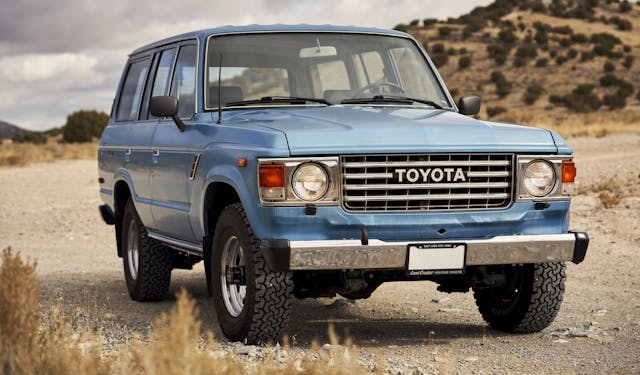
Average condition #2 (Excellent) value: +22 percent
The iconic Land Cruiser is of course the FJ40, which skyrocketed in value from 2010–15, then corrected a bit. The later, less agricultural Land Cruisers have a following, too, and FJ60/62s started appreciating in the mid-2010s—about when FJ40s started leveling off. FJ60/62s are still surging, and saw their largest single increase since we added them to our data pool. (That’s a running theme throughout this list.)
The FJ60/62 marked the Land Cruiser’s move to a more comfortable driving and trekking experience, as Toyota redesigned it to better compete in a growing SUV market. The quick way to tell the difference between an FJ60 and an FJ62 is the FJ60 has round headlights and a carbureted 4.2-liter 2F six-cylinder with four-speed manual. The 1988-90 FJ62 brought a 4.0-liter 3F six-cylinder with fuel injection and an automatic transmission—both firsts for the Land Cruiser. FJ62s are worth a little more, but both are highly prized workhorses that seem to be more highly prized from month to month these days. The average condition #2 value presently sits at $40,400.
Gen-Xers are the main drivers of the vintage truck market at the moment, and Land Cruisers are no exception. They make up 49 percent of Hagerty insurance quotes for FJ60/62s, while millennials make up 28 percent.
Over the past three years, the values people quote on these vehicles when calling us for insurance has grown 24 percent, and the number of quotes is up 214 percent. Often times, such activity in our call centers is a leading indicator of future value growth. Even in a generally hot truck market, the FJ60/62 Land Cruiser is a standout, and it looks like it’s not done growing.
1991 Nissan Figaro

Average condition #2 (Excellent) value: +22 percent
Nissan’s famous performance cars, the Skyline and Z car, are both as hot as can be right now, but let’s not forget Nissan’s other fast-appreciating two-door, the Figaro. Yes, it’s slower and lower tech, with front-drive and a three-speed automatic. But in the $20,000 range, there are few cars that get more people turning their heads, whipping out their smartphones, and asking, “What’s that?!”
Nissan introduced the Figaro at the 1989 Toyota Motor Show, and its styling is a clear nod to the past. The white leather seats with contrast piping look like something from the 1960s, as do its thin-spoked steering wheel and large chrome-trimmed analog gauges. Figaros came in four colors (Lapis Grey, Emerald Green, Pale Aqua, and Topaz Mist), one for each season. Nissan limited production to 20,000 units, and they were delivered via a lottery system.
Figaros turned 25 years old (and therefore became legal to register in the States) in 2016. Even as more Figaros get imported here, demand greatly exceeds supply and prices have surged accordingly. The condition #2 value shot up from $22,000 to $26,800 in our latest data update.
1983–89 Mitsubishi Starion

Average condition #2 (Excellent) value: +26 percent
Like the second gen Mazda RX-7, the Mitsubishi Starion/Chrysler Conquest twins (aka “Starquests”) aped the good looks of the Porsche 944 and added a turbocharged engine to their top trims (the Starion ESI-R and the Conquest TSi). When new, Starquests generally cost less than their competitors, then they stayed cheap and somewhat obscure for years. Now, though, it appears that they’re moving beyond cult status. This was the first significant increase for Starquests since we started tracking them, although they’re still on the entry-level end of things at $15,000 for a Starion in and $17,500 for a Conquest in #2 condition.
1990–96 Nissan 300ZX
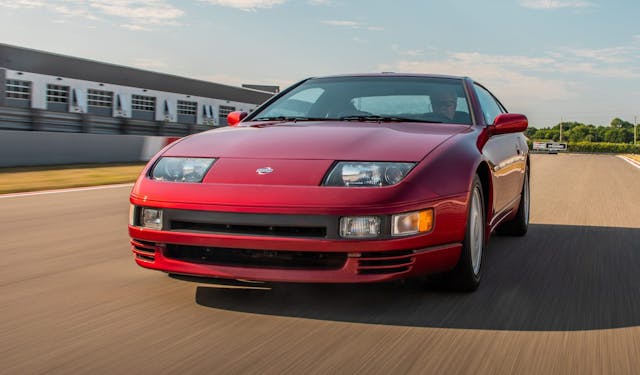
Average condition #2 (Excellent) value: +27 percent
Recently, we did a deeper dive on the Nissan Z market, going so far as to ask if the Z is the next Porsche 911 when it comes to collector values. It should come as no surprise, then, that four of the cars on this list are Z cars.
Leading the charge is the second-gen (Z32) Nissan 300ZX, which also posted its biggest percentage increase on record. It probably has room to keep climbing, since it has lagged a bit behind other rapidly appreciating ’90s Japanese classics like the Mark IV Toyota Supra and third-generation (FD) Mazda RX-7, despite offering similarly stellar performance and packing similar levels of cutting edge technology (the Z32 was one of the first cars designed with computer software and turbo versions have four-wheel steering).
Both base and turbocharged versions grew by similar amounts, with the median #2 value sitting at $17,100 and 300ZX Turbos sitting at $33,200.
1974 Datsun 260Z

Average condition #2 (Excellent) value: +28 percent
The one-year-only 260Z, naturally, is closest to the original and most highly prized Z car—the 240Z. The main differences are the 260’s bigger bumpers and an engine stroked slightly to compensate for a lower compression ratio. As more people get priced out of increasingly expensive 240s, it’s only natural for them to turn to later and cheaper Zs, which in turn creates more demand and higher prices for those cars. So it goes.
The 260Z had its biggest percentage increase to date, according to our records. Standard coupes now carry a #2 value of $39,400, but even the less desirable 2+2 model grew 24 percent to a #2 value of $25,500.
1999–00 Civic Si

Average condition #2 (Excellent) value: +41 percent
The 1999-00 Civic Si, with its rev-happy B16 VTEC four and a snappy 5-speed, made a great impression on thousands of young gearheads and tuners when they were new. Twenty years later, there just aren't a whole lot of clean, unmodified, low-mile Civics left, so the ones that are out there command a big premium when they come out of hiding. We've reported on this before, but apparently these hot Hondas had more room to grow. From January to May, the condition #2 value went from $19,900 to $28,100.
Why a 20-year-old Civic should be worth more than a clean base C5 Corvette doesn't make a whole lot of sense, but this is one of those cases where you can blame the young people. Looking at Hagerty insurance quotes for Civic Sis, 45 percent of interest comes from millennials and 22 percent comes from Gen Z, who make up just 19 percent and 6 percent of the market as a whole, respectively.
1984–88 Nissan 300ZX

Average condition #2 (Excellent) value: +43 percent
If we turn back the clock 10 years to 2011, the original Z31-generation Nissan 300ZX had a median condition #2 value of just $6700 and was one of the many downright cheap two-seaters to choose from out there. For better or worse, that list is a lot shorter now. Today, the Z31's median #2 value is $20,600, and like so many other cars this year, it just saw its biggest increase to date. All model years, all trims, and all conditions surged. No Z31 variant grew less than 30 percent.
1982–86 Toyota Supra
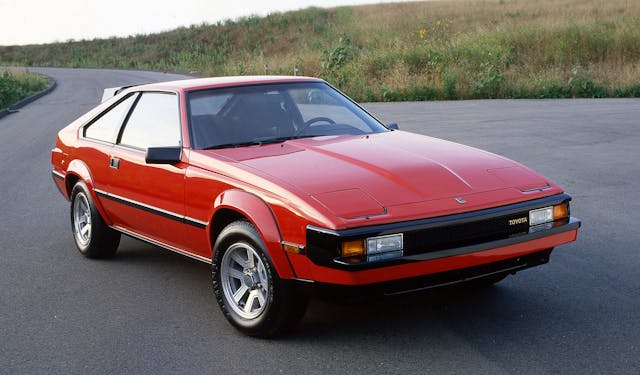
Average condition #2 (Excellent) value: +44 percent
Back in 1982, the Toyota Supra was still a long way away from becoming the king of the tuner car hill. It was still based on the Celica, distinguished by a different front end and extra length for its larger straight-six engine. The Mk II Supra isn't the best Supra. It isn't even the second best. But it did mark the point when Toyota got serious about performance. Four-wheel independent suspension came courtesy of Lotus, and engine power increased with each model year. P-type ("P" for "Performance") models also got fender flares, a limited-slip differential, larger wheels, and a rear spoiler.
Most Mk II Supras got beaten on, raced, modified, and/or crashed. As appreciation for later Supras trickles down to a shrinking supply of good Mk IIs, up goes the price. It saw its biggest surge to date with the latest update, with average #2 values climbing from $15,600 to $22,500. Over the last 10 years, these cars have tripled in value.
1978–83 Datsun 280ZX

Average condition #2 (Excellent) value: +50 percent
Once Z cars sprouted an "X" at the end of their names, they started to become heftier, softer versions of the original 240Z that turned the car world on its ear in 1970. But, like everything with a Z badge, 280ZXs are having a moment. These cars have been gradually creeping up since 2015, but this was by the far the biggest increase in value they have seen to date. The average #2 value shot up from $16,100 to $24,200.
1995–98 Nissan Skyline GT-R (R33)
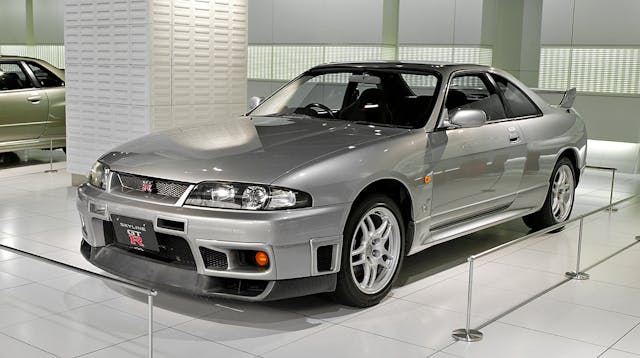
Average condition #2 (Excellent) value: +52 percent
The R32 (1989-94) version of the GT-R became eligible to bring to the States in 2014, and they flew off lots as fast as importers could bring them in. In January of last year, the R33 became legal, and the market for them is already crazy. Although the R33 is something of a middle child between the original groundbreaking R32 and the sophisticated R34, the R33 is rarer than its predecessor, not to mention quicker and more roomy on the inside. There is more heat in the market right now for R33s, as they saw one of the biggest increases of any car that we monitor so far this year, even as R32s were up "just" 4 percent.
All R33 GT-Rs surged with this update, but we should note that there's a wide range of value here. A "normal" GT-R carries a #2 value of $68,000. Stepping up to a V-Spec model costs $71,000, while a V-Spec N1 crosses the six-figure line at $124,000. In a different ballpark entirely are the 40 or so NISMO 400Rs, which are now worth $440,000. It remains to be seen what will happen as more R33s hit our shores and some of that pent up demand gets satisfied, but for now people are clamoring for them, and it's the youngest buyers expressing the most interest, despite the already sky-high prices. Millennials make up 65 percent of insurance quotes for R33s, and Gen Z makes up 11 percent. What was once forbidden fruit now accounts for expensive taste.
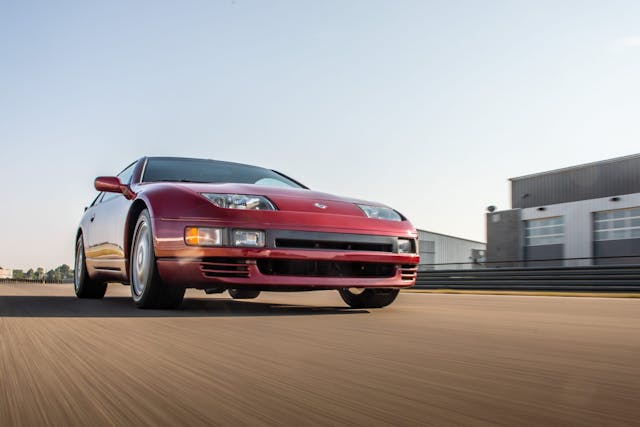


What about my 1998 Mazda Protege? Some parts are made in Japan, and it is one of the most dependable cars ever made.
With the increase in demand for collectible Japanese cars I am suprized you do not have a value for a 1972 Celica
Or aside from the supra, any other celica for that matter